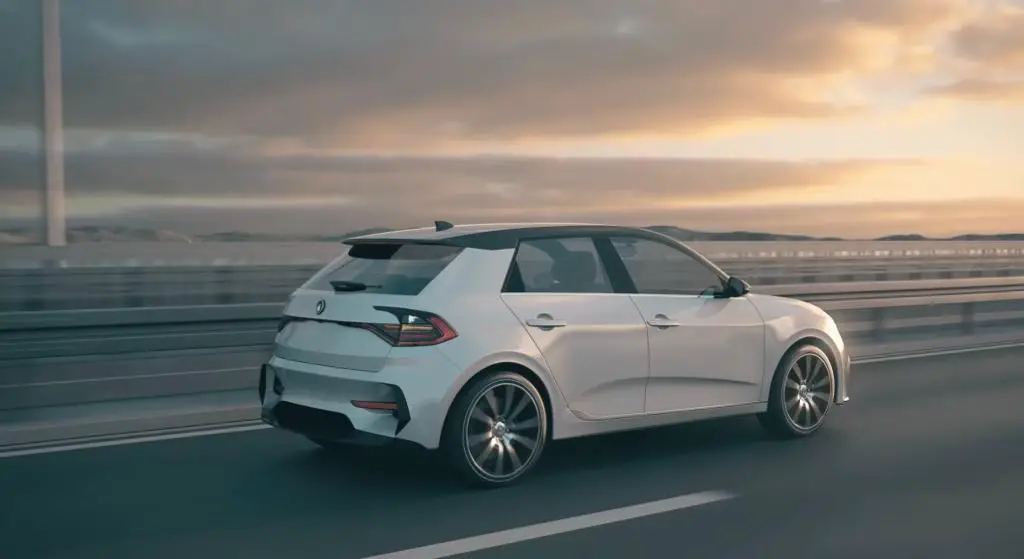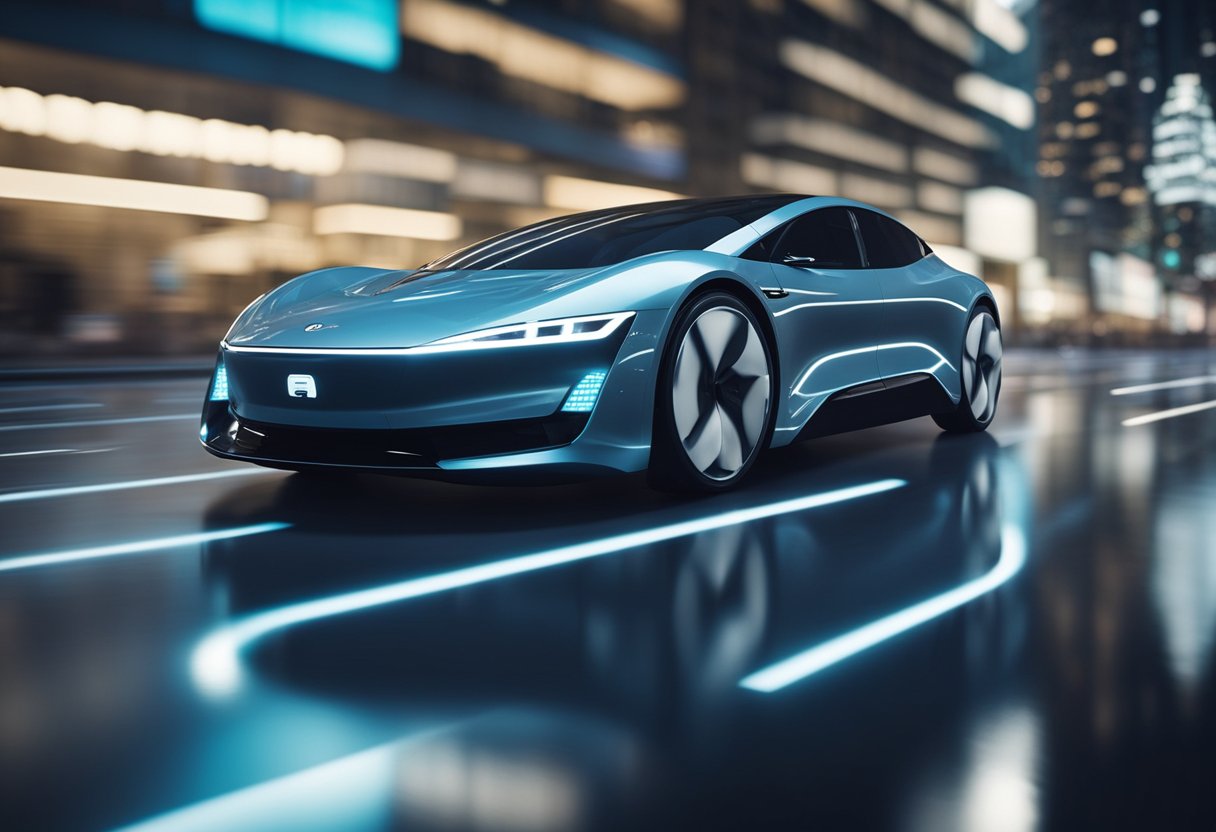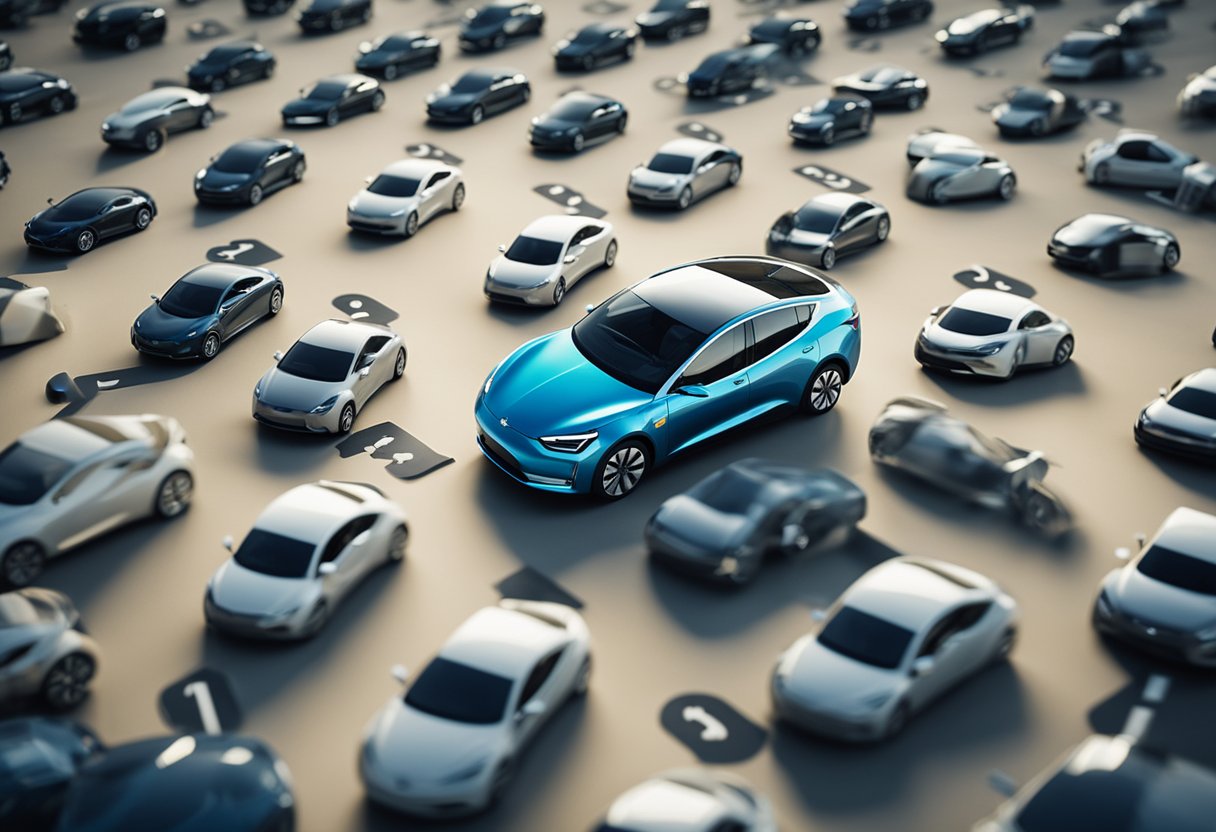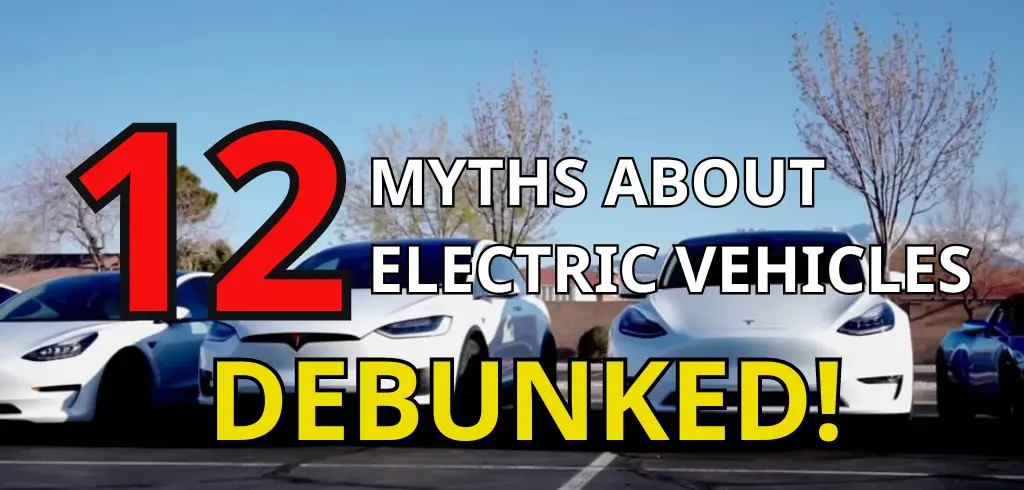Electric vehicles (EVs) are becoming more and more popular as people look for ways to reduce their carbon footprint and save money on fuel costs. However, there are still many myths and misconceptions about EVs that may be preventing some people from making the switch. In this article, we will explore 12 of the most common myths about electric vehicles and debunk them with facts and data.

Debunking these myths is important because it can help people make informed decisions about whether or not to buy an EV. By separating fact from fiction, we can better understand the benefits and limitations of electric vehicles and make informed choices based on our individual needs and circumstances.
So, whether you’re considering buying an EV or just curious about this new technology, read on to learn the truth about some of the most common myths surrounding electric vehicles.
Table of Contents
Key Takeaways
- Electric vehicles significantly cut lifecycle greenhouse gas emissions in almost all circumstances and are the key technology for decarbonizing road transport.
- While not having a car has even larger climate benefits, many people’s ability to go car-free is limited by their circumstances and the availability of alternatives.
- There are many misconceptions about electric vehicles, including concerns about their environmental impact, battery life, and range, but many of these myths are not supported by the available data.
Debunking Myths About EVs and Environment
When it comes to electric vehicles (EVs), there are many myths and misconceptions about their impact on the environment. In this section, we will debunk some of the most common myths about EVs and their environmental impact.
EVs and Greenhouse Gas Emissions
Myth : They are not actually better for the environment than traditional gas-powered vehicles.
This is simply not true. According to the International Council on Clean Transportation (ICCT), EVs produce less greenhouse gas (GHG) emissions than gasoline-powered vehicles, even when you take into account the emissions produced during the manufacturing process.
Lifecycle Analysis of EVs
Myth: They have a higher environmental cost than traditional vehicles due to the production and disposal of their batteries.
However, a lifecycle analysis of EVs shows that their overall environmental impact is still lower than that of traditional vehicles. This is because the emissions produced during the manufacturing process are offset by the lower emissions produced during the vehicle’s use.
EVs and Renewable Energy
Myth: EVs are not truly green because they are powered by electricity generated from fossil fuels.
However, this is changing rapidly as more and more renewable energy sources are being used to generate electricity. In fact, the IPCC has stated that the widespread adoption of renewable energy is essential for mitigating the effects of climate change.
Overall, EVs are a crucial part of the solution to reducing the environmental impact of transportation. While there are still some challenges to overcome, such as the need for more renewable energy sources, the evidence shows that EVs are a cleaner, greener alternative to traditional gas-powered vehicles.
Understanding EV Technology and Infrastructure
EV Charging Infrastructure
Myth: There is not enough charging infrastructure to support them.
However, this is not true. EV charging stations are becoming more common on highways and in public places. In fact, there are more than 100,000 public charging stations in the United States alone.
There are three levels of charging: Level 1, Level 2, and Level 3. Level 1 charging uses a standard 120-volt household outlet and takes the longest time to charge. Level 2 charging uses a 240-volt outlet and charges faster than Level 1. Level 3 charging, also known as DC fast charging, is the fastest and most powerful charging option, but it is not as widely available as Level 1 and Level 2 charging.
Battery Technology and Manufacturing
Myth: Their batteries are not efficient and are harmful to the environment.
However, lithium-ion batteries, which are commonly used in electric vehicles, are highly efficient and have a low environmental impact. The manufacturing process of battery packs is constantly improving to make them more energy-efficient and environmentally friendly. Additionally, recycling programs are in place to ensure that the batteries are properly disposed of and do not harm the environment.
Vehicle-to-Grid Technology
Vehicle-to-Grid (V2G) technology is a system that allows electric vehicles to supply electricity back to the grid during times of high electricity demand. This technology helps balance the electricity demand and reduces the need for additional power generation.
V2G technology is still in its early stages, but it has the potential to revolutionize the way we use electricity. With V2G technology, electric vehicles can become a part of the solution to the electricity demand problem, rather than a part of the problem itself.
Overall, electric vehicle technology and infrastructure are constantly improving, and many of the myths surrounding them are simply not true. With more charging stations, efficient battery technology, and V2G technology, electric vehicles are becoming a more viable and sustainable option for transportation.
The Economic Aspect of EVs
When it comes to purchasing an electric vehicle (EV), there are several economic factors to consider. In this section, we’ll take a closer look at the cost of EVs, maintenance and servicing, as well as incentives and exemptions that may be available to you.
Cost of EVs
Myth: They are expensive to purchase.
While it is true that some EVs can be more expensive than their petrol counterparts, the prices have been steadily decreasing over the years. Additionally, EVs have lower fuel costs and are more fuel-efficient than petrol cars, which can save you money in the long run.
Maintenance and Servicing
Myth: EVs are expensive to maintain and service.
However, EVs have fewer moving parts than petrol cars, which means they require less maintenance. Additionally, EVs don’t require oil changes, spark plug replacements, or emissions checks, which can save you money on servicing costs.
Incentives and Exemptions
The UK government offers tax credits and incentives for those who purchase EVs. These incentives can help offset the higher purchase price of an EV. Additionally, EVs are exempt from certain taxes, such as the London Congestion Charge.
Overall, while EVs may have a higher purchase price than petrol cars, they can save you money in the long run due to their lower fuel costs and maintenance requirements. Additionally, with tax credits and incentives available, purchasing an EV can be more affordable than you think.
EVs in the Media and Public Perception
Media Representation of EVs
Electric vehicles (EVs) have been the subject of intense media scrutiny in recent years. While some mainstream media outlets have been supportive of EVs, others have been hostile in their reporting. This has led to a great deal of confusion and misinformation in the public sphere.
Myth: They have a high carbon debt.
This myth is based on the idea that the production of the batteries used in EVs is highly energy-intensive and therefore produces a large amount of carbon dioxide (CO2). However, studies have shown that the carbon debt associated with EVs is quickly offset by the real-world efficiency of EVs compared to traditional gasoline-powered vehicles.
Myth: EVs are worse for the environment than gasoline-powered vehicles because of power plant emissions.
While it is true that power plant emissions are a factor in the overall carbon footprint of EVs, studies have shown that even in areas where electricity is largely generated from fossil fuels, EVs still produce fewer emissions than their gasoline-powered counterparts.
Public Adoption of EVs
Despite the many benefits of EVs, including their low operating costs and environmental friendliness, public adoption of EVs has been slow in many parts of the world.
Myth: EVs are expensive and impractical.
However, this perception is changing rapidly as more and more automakers introduce affordable and practical EVs. For example, the VW e-Golf and the Volvo C40 are both affordable and practical EVs that are gaining popularity in many parts of the world.
Myth: Electricity grids are unable to handle the increased demand for electricity that would be created by widespread adoption of EVs.
However, studies have shown that electricity grids can easily handle the increased demand for electricity created by widespread adoption of EVs. In fact, in countries like Norway, where EV adoption has been particularly high, the electricity grid has proven to be more than capable of handling the increased demand for electricity created by EVs.
Future of Electric Vehicles

Electric vehicles are the future of transportation. The development of EVs has come a long way since the first electric car was introduced in the early 1800s. Today, EVs are becoming more affordable and are being adopted by more consumers around the world.
One of the main advantages of EVs is their environmental friendliness. They produce zero emissions, which reduces air pollution and greenhouse gas emissions. As the world becomes more focused on green energy, EVs will play a significant role in reducing the carbon footprint of the transportation sector.
The manufacturing of EV batteries is also becoming more efficient, which is driving down the cost of EVs. The Bipartisan Infrastructure Law passed in 2021 includes funding for the development of EV charging infrastructure, which will make it easier for people to switch to EVs.
Instant torque is another advantage of EVs. Unlike combustion-engine cars that need to build up speed, EVs provide instant torque, which means they can accelerate quickly. This makes EVs a great option for people who want a fun and sporty driving experience.
Norway is a great example of a country that has embraced EVs. In 2021, almost 80% of new cars sold in Norway were electric. This is due to the country’s incentives for EVs, such as tax exemptions and free charging.
Despite the advantages of EVs, there are still some myths surrounding them.
Myth: EVs are not as reliable as gasoline vehicles or that they are not suitable for long trips.
However, this myth is not true. EVs are just as reliable as gasoline vehicles, and with the development of fast-charging technology, they are suitable for long trips.
Overall, the future of electric vehicles looks bright. As technology continues to improve and more people switch to EVs, the transportation sector will become more sustainable and environmentally friendly.
Frequently Asked Questions

Are electric cars actually better for the planet?
Yes, electric cars are better for the planet than traditional gas-powered cars. According to the United States Environmental Protection Agency, electric cars produce fewer greenhouse gas emissions than gas-powered cars, even when taking into account the emissions produced during the manufacturing of the battery. Additionally, electric cars produce no emissions while driving, which can significantly reduce air pollution in cities.
What are the major problems with using electric vehicles?
One of the major problems with using electric vehicles is their limited range. While the range of electric cars has been improving over the years, it can still be a concern for drivers who need to travel long distances. Additionally, charging infrastructure is not as widely available as gas stations, which can be a challenge for some drivers.
What are the pros and cons of electric cars?
The pros of electric cars include lower operating costs, reduced greenhouse gas emissions, and a smoother and quieter driving experience. The cons of electric cars include their limited range, the need for charging infrastructure, and the higher upfront cost compared to gas-powered cars.
Can the electricity grid handle a shift to electric vehicles?
Yes, the electricity grid can handle a shift to electric vehicles. According to the National Renewable Energy Laboratory, the current grid can support up to 150 million electric cars, which is more than 75% of the vehicles on the road today. Additionally, many utilities are investing in upgrading the grid to support more electric vehicles.
What types of electric cars are available?
There are several types of electric cars available, including battery electric vehicles (BEVs), plug-in hybrid electric vehicles (PHEVs), and hybrid electric vehicles (HEVs). BEVs run entirely on electricity and have a range of up to a few hundred miles. PHEVs have both an electric motor and a gas engine and can run on either electricity or gas. HEVs have an electric motor and a gas engine, but the electric motor is used to assist the gas engine rather than power the car on its own.
Is it worth buying an electric car?
Whether or not it is worth buying an electric car depends on your individual needs and preferences. If you have a short commute and access to charging infrastructure, an electric car could be a great option for you.
Additionally, if you are looking to reduce your carbon footprint and save money on fuel costs, an electric car could be a good investment. However, if you frequently need to travel long distances or do not have access to charging infrastructure, a gas-powered car may be a better option for you.
